|
|
2016年, 第3卷, 第4期 刊出日期:2016-10-01
|
上一期
下一期 |
|
|
|
|
|
Biology and therapy of urological cancer metastasis
Edwin M. Posadas, David J. McConkey, Leland W. K. Chung
Asian Journal of Urology, 2016, 3(4): 167-169.
 摘要
摘要
(
349 )
 PDF
PDF (1744KB)
(
691
)
From the early roots of modern urology to today, genitourinary (GU) cancers have been an important part of the fields of urology and cancer biology. As medical science has advanced, newer clinical and basic viewpoints have impacted the thinking and practice in this important field. As such, GU oncology has been consistently seen as an area of rapid evolution both in biological understanding and clinical care. GU cancers continue to rise in incidence worldwide. Moreover, they represent a significant portion of cancer mortality in Asia and the western world. These facts have been met with some of the boldest and most important advances in cancer biology and therapy that have reshaped this field.
参考文献 |
相关文章 |
计量指标
|
|
|
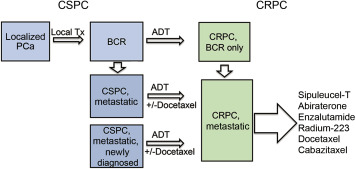
Non-invasive actionable biomarkers for metastatic prostate cancer
Jun Luo
Asian Journal of Urology, 2016, 3(4): 170-176.
 摘要
摘要
(
328 )
 PDF
PDF (1979KB)
(
266
)
In the current clinical setting, many disease management options are available for men diagnosed with prostate cancer. For metastatic prostate cancer, first-line therapies almost always involve agents designed to inhibit androgen receptor (AR) signaling. Castration-resistant prostate cancers (CRPCs) that arise following first-line androgen deprivation therapies (ADT) may continue to respond to additional lines of AR-targeting therapies (abiraterone and enzalutamide), chemotherapies (docetaxel and cabazitaxel), bonetargeting Radium-223 therapy, and immunotherapy sipuleucel-T. The rapidly expanding therapies for CRPC is expected to transform this lethal disease into one that can be managed for prolonged period of time. In the past 3 years, a number of promising biomarkers that may help to guide treatment decisions have been proposed and evaluated, including androgen receptor splice variant-7 (AR-V7), a truncated AR lacking the ligand-binding domain (LBD) and mediate constitutively-active AR signaling. Putative treatment selection markers such as ARV7 may further improve survival benefit of existing therapies and help to accelerate development of new agents for metastatic prostate cancer. In the metastatic setting, it is important to consider compatibility between the putative biomarker with non-invasive sampling. In this review, biomarkers relevant to the setting of metastatic prostate cancer are discussed with respect to a number of key attributes critical for clinical development of non-invasive, actionable markers. It is envisioned that biomarkers for metastatic prostate cancer will continue to be discovered, developed, and refined to meet the unmet needs in both standard-of-care and clinical trial settings.
参考文献 |
相关文章 |
计量指标
|
|
|
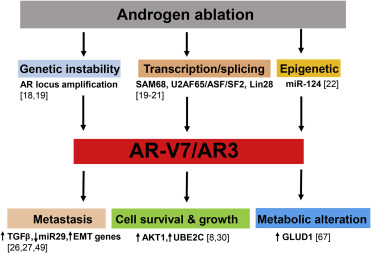
Role of androgen receptor splice variants in prostate cancer metastasis
Jin Xu, Yun Qiu
Asian Journal of Urology, 2016, 3(4): 177-184.
 摘要
摘要
(
335 )
 PDF
PDF (2235KB)
(
167
)
Prostate cancer (PCa) is one of the most lethal cancers in western countries. Androgen receptor (AR) signaling pathway plays a key role in PCa progression. Despite the initial effectiveness of androgen deprivation therapy (ADT)for treatment of patients with advanced PCa, most of them will develop resistance to ADT and progress to metastatic castration resistant prostate cancer (mCRPC). Constitutively transcriptional activated AR splice variants (AR-Vs) have emerged as critical players in the development and progression of mCRPC. Among AR-Vs identified to date, AR-V7 (a.k.a. AR3) is one of the most abundant and frequently found in both PCa cell lines and in human prostate tissues. Most of functional studies have been focused on AR-V7/AR3 and revealed its role in regulation of survival, growth, differentiation and migration in prostate cells. In this review, we will summarize our current understanding of regulation of expression and activity of AR-Vs in mCRPC.
参考文献 |
相关文章 |
计量指标
|
|
|
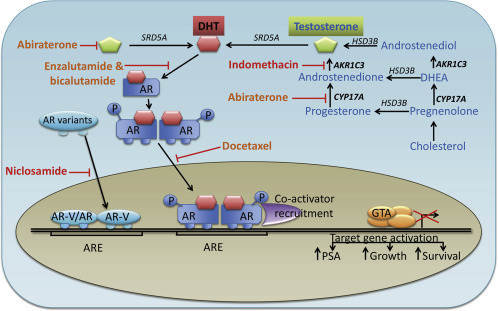
Adaptive pathways and emerging strategies overcoming treatment resistance in castration resistant prostate cancer
Cameron M. Armstrong, Allen C. Gao
Asian Journal of Urology, 2016, 3(4): 185-194.
 摘要
摘要
(
432 )
 PDF
PDF (3151KB)
(
880
)
The therapies available for prostate cancer patients whom progress from hormonesensitive to castration resistant prostate cancer include both systemic drugs, including docetaxel and cabazitaxel, and drugs that inhibit androgen signaling such as enzalutamide and abiraterone. Unfortunately, it is estimated that up to 30% of patients have primary resistance to these treatments and over time even those who initially respond to therapy will eventually develop resistance and their disease will continue to progress regardless of the presence of the drug. Determining the mechanisms involved in the development of resistance to these therapies has been the area of intense study and several adaptive pathways have been uncovered. Androgen receptor (AR) mutations, expression of AR-V7 (or other constitutively active androgen receptor variants), intracrine androgen production and overexpression of androgen synthesis enzymes such as Aldo-Keto Reductase Family 1, Member C3 (AKR1C3) are among the many mechanisms associated with resistance to anti-androgens. In regards to the taxanes, one of the key contributors to drug resistance is increased drug efflux through ATP Binding Cassette Subfamily B Member 1 (ABCB1). Targeting these resistance mechanisms using different strategies has led to various levels of success in overcoming resistance to current therapies. For instance, targeting AR-V7 with niclosamide or AKR1C3 with indomethacin can improve enzalutamide and abiraterone treatment. ABCB1 transport activity can be inhibited by the dietary constituent apigenin and antiandrogens such as bicalutamide which in turn improves response to docetaxel. A more thorough understanding of how drug resistance develops will lead to improved treatment strategies. This review will cover the current knowledge of resistance mechanisms to castration resistant prostate cancer therapies and methods that have been identified which may improve treatment response.
参考文献 |
相关文章 |
计量指标
|
|
|
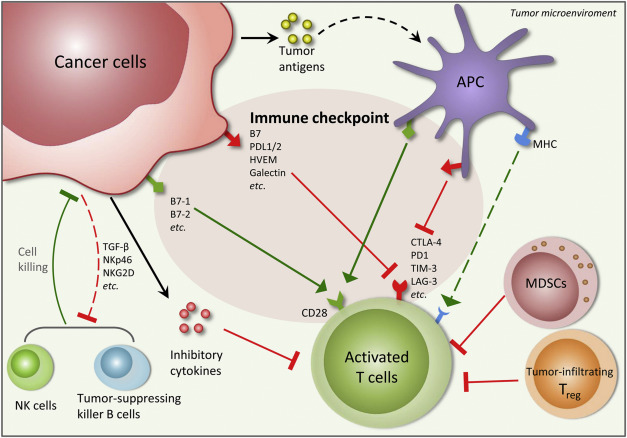
Immune phenotypes of prostate cancer cells: Evidence of epithelial immune cell-like transition?
Dong Lin, Xinya Wang, Stephen Yiu Chuen Choi, Xinpei Ci, Xin Dong, Yuzhuo Wang
Asian Journal of Urology, 2016, 3(4): 195-202.
 摘要
摘要
(
339 )
 PDF
PDF (7361KB)
(
110
)
Prostate cancers (PCa) have been reported to actively suppress antitumor immune responses by creating an immune-suppressive microenvironment. There is mounting evidence that PCas may undergo an "Epithelial Immune Cell-like Transition" (EIT) by expressing molecules conventionally associated with immune cells (e.g., a variety of cytokines/receptors, immune transcription factors, Ig motifs, and immune checkpoint molecules), which subsequently results in the suppression of anti-cancer immune activity within the tumor microenvironment. Recent progress within the field of immune therapy has underscored the importance of immune checkpoint molecules in cancer development, thus leading to the development of novel immunotherapeutic approaches. Here, we review the expression of select immune checkpoint molecules in PCa epithelial and associated immune cells, with particular emphasis on clinical data supporting the concept of an EIT-mediated phenotype in PCa. Furthermore, we summarize current advances in anti-immune checkpoint therapies, and provide perspectives on their potential applicability.
参考文献 |
相关文章 |
计量指标
|
|
|
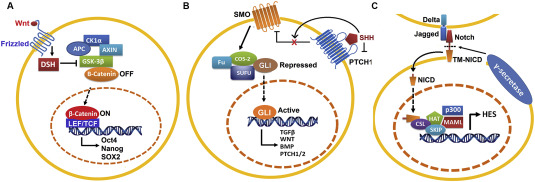
The evolving landscape of prostate cancer stem cell: Therapeutic implications and future challenges
Eun-Jin Yun, U-Ging Lo, Jer-Tsong Hsieh
Asian Journal of Urology, 2016, 3(4): 203-210.
 摘要
摘要
(
374 )
 PDF
PDF (2378KB)
(
153
)
Prostate cancer (PCa) is the most common cause of malignancy in males and the second leading cause of cancer mortality in United States. Current treatments for PCa include surgery, radiotherapy, and androgen-deprivation therapy. Eventually, PCa relapses to an advanced castration-resistant PCa (CRPC) that becomes a systematic disease and incurable. Therefore, identifying cellular components and molecular mechanisms that drive aggressive PCa at early stage is critical for disease prognosis and therapeutic intervention. One potential strategy for aggressive PCa is to target cancer stem cells (CSCs) that are identified by several unique characteristics such as immortal, self-renewal, and pluripotency. Also, CSC is believed to be a major factor contributing to resistance to radiotherapy and conventional chemotherapies. Moreover, CSCs are thought to be the critical cause of metastasis, tumor recurrence and cancer-related death of multiple cancer types, including PCa. In this review, we discuss recent progress made in understanding prostate cancer stem cells (PCSCs). We focus on the therapeutic strategies aimed at targeting specific surface markers of CSCs, the key signaling pathways in the maintenance of self-renewal capacity of CSCs, ATP-binding cassette (ABC) transporters that mediate the drug-resistance of CSCs, dysregulated microRNAs expression profiles in CSCs, and immunotherapeutic strategies developed against PCSCs surface markers.
参考文献 |
相关文章 |
计量指标
|
|
|
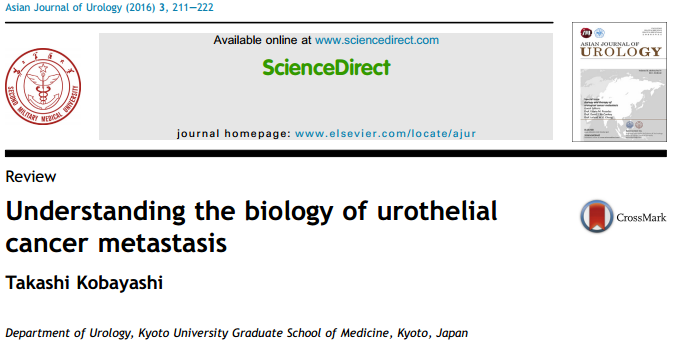
Understanding the biology of urothelial cancer metastasis
Takashi Kobayashi
Asian Journal of Urology, 2016, 3(4): 211-222.
 摘要
摘要
(
364 )
 PDF
PDF (1820KB)
(
296
)
Management of unresectable urothelial cancer (UC) has been a clinical challenge for decades. While drug resistance is a key issue, precise understanding of biology of UC metastasis is another challenge for the improvement of treatment outcome of UC patients. Introduction of the cell biology concepts including epithelial-mesenchymal transition (EMT) and cancer stemness seems to explain UC metastasis. Molecular genetics based on gene expression profiling, next generation sequencing, and explosion of non-coding RNA world has opened the door to intrinsic molecular subtyping of UC. Next steps include, based on the recently accumulated understanding, the establishment of novel disease models representing UC metastasis in various experimental platforms, particularly in vivo animal systems. Indeed, novel knowledge molecular genetics has not been fully linked to the modeling of UC metastasis. Further understanding of bladder carcinogenesis is needed particularly with regard to cell of origin related to tumor characteristics including driver gene alterations, pathological differentiations, and metastatic ability. Then we will be able to establish better disease models, which will consequently lead us to further understanding of biology and eventually the development of novel therapeutic strategies for UC metastasis.
参考文献 |
相关文章 |
计量指标
|
|
|
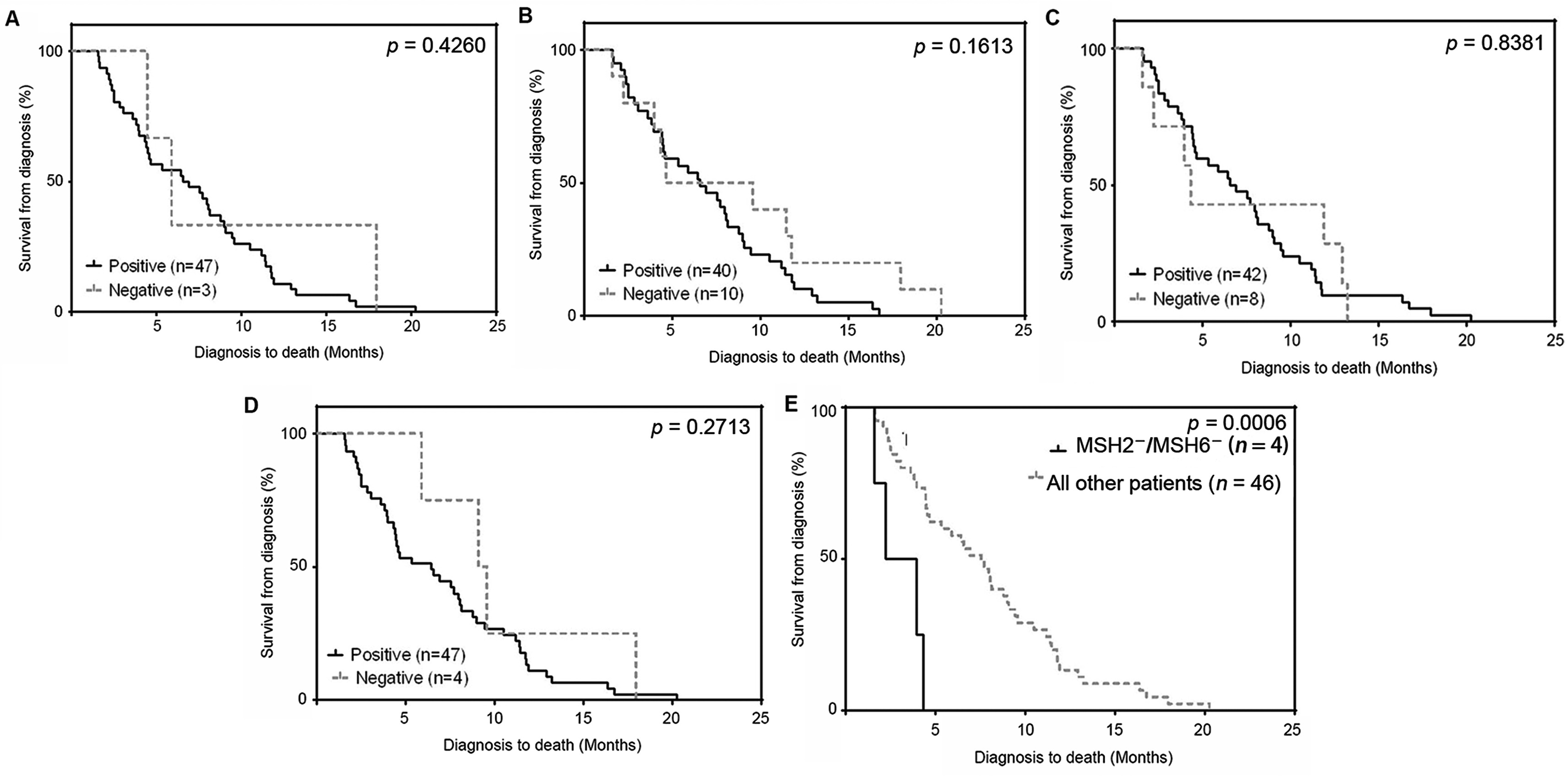
Mismatch repair enzyme expression in primary and castrate resistant prostate cancer
Belinda Nghiem, Xiaotun Zhang, Hung-Ming Lam, Lawrence D. True, Ilsa Coleman, Celestia S. Higano, Peter S. Nelson, Colin C. Pritchard, Colm Morrissey
Asian Journal of Urology, 2016, 3(4): 223-228.
 摘要
摘要
(
310 )
 PDF
PDF (2339KB)
(
204
)
Objective: Although the utility of immunohistochemistry (IHC) for assessing mismatch repair (MMR) protein expression has been demonstrated in solid tumors including primary prostate cancer (PCa), its utility has not been assessed in castration-resistant PCa (CRPC). Methods: Tissue microarrays were constructed from 127 radical prostatectomies and 155 CRPC metastases from 50 patients. MMR (MLH1, MSH2, MSH6, and PMS2) expression was assessed by IHC and gene expression arrays. Associations between MMR protein expression in PCa and CRPC and biochemical recurrence (BCR) or time from diagnosis to death respectively were determined. Results: There was no correlation between levels of MMR protein and BCR. Absence of MSH2 and MSH6 was the most pronounced at 15% and 22% in PCa and 17.8% and 16% in CRPC patients, respectively. MSH2 and MSH6 protein were absent in 9.4% and 8% of PCa and CRPC respectively. Absence of individual MMR proteins did not correlate with BCR or time from diagnosis to death. However absent MSH2/MSH6 in CRPC was associated with shorter time to death (p=0.0006). Loss of MSH2 was verified at the gene expression level. This finding correlated with microsatellite instability previously reported in this CRPC cohort.
参考文献 |
相关文章 |
计量指标
|
|
|
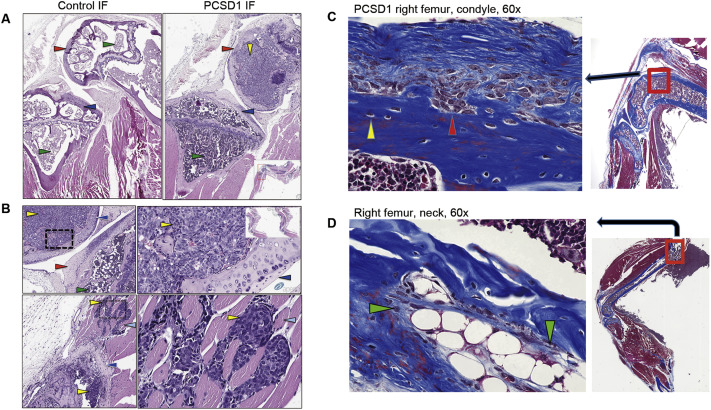
Specific bone region localization of osteolytic versus osteoblastic lesions in a patient-derived xenograft model of bone metastatic prostate cancer
Takeshi Hirata, Seung Chol Park, Michelle T. Muldong, Christina N. Wu, Tomonori Yamaguchi, Amy Strasner, Omer Raheem, Hiromi Kumon, Robert L. Sah, Nicholas A. Cacalano, Catriona H. M. Jamieson, Christopher J. Kane, Koichi Masuda, Anna A. Kulidjian, Christina A. M. Jamieson
Asian Journal of Urology, 2016, 3(4): 229-239.
 摘要
摘要
(
311 )
 PDF
PDF (9505KB)
(
49
)
Objective: Bone metastasis occurs in up to 90% of men with advanced prostate cancer and leads to fractures, severe pain and therapy-resistance. Bone metastases induce a spectrum of types of bone lesions which can respond differently to therapy even within individual prostate cancer patients. Thus, the special environment of the bone makes the disease more complicated and incurable. A model in which bone lesions are reproducibly induced that mirrors the complexity seen in patients would be invaluable for pre-clinical testing of novel treatments. The microstructural changes in the femurs of mice implanted with PCSD1, a new patient-derived xenograft from a surgical prostate cancer bone metastasis specimen, were determined. Methods: Quantitative micro-computed tomography (micro-CT) and histological analyses were performed to evaluate the effects of direct injection of PCSD1 cells or media alone (Control) into the right femurs of Rag2-/-γc-/- male mice. Results: Bone lesions formed only in femurs of mice injected with PCSD1 cells. Bone volume (BV) was significantly decreased at the proximal and distal ends of the femurs (p<0.01) whereas BV (p<0.05) and bone shaft diameter (p<0.01) were significantly increased along the femur shaft. Conclusion: PCSD1 cells reproducibly induced bone loss leading to osteolytic lesions at the ends of the femur, and, in contrast, induced aberrant bone formation leading to osteoblastic lesions along the femur shaft. Therefore, the interaction of PCSD1 cells with different bone region-specific microenvironments specified the type of bone lesion. Our approach can be used to determine if different bone regions support more therapy resistant tumor growth, thus, requiring novel treatments.
参考文献 |
相关文章 |
计量指标
|
|
|
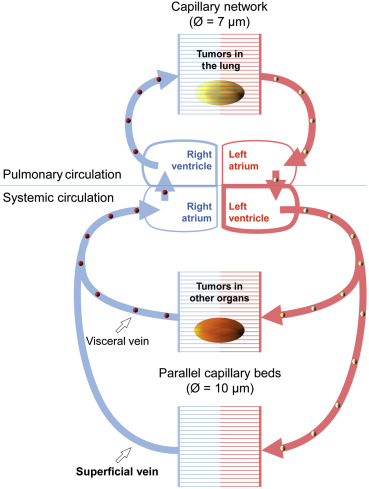
Cultured circulating tumor cells and their derived xenografts for personalized oncology
Ruoxiang Wang, Gina C. Y. Chu, Stefan Mrdenovic, Alagappan A. Annamalai, Andrew E. Hendifar, Nicholas N. Nissen, James S. Tomlinson, Michael Lewis, Nallasivam Palanisamy, Hsian-Rong Tseng, Edwin M. Posadas, Michael R. Freeman, Stephen J. Pandol, Haiyen E. Zhau, Leland W. K. Chung
Asian Journal of Urology, 2016, 3(4): 240-253.
 摘要
摘要
(
364 )
 PDF
PDF (3396KB)
(
153
)
Recent cancer research has demonstrated the existence of circulating tumor cells (CTCs) in cancer patient's blood. Once identified, CTC biomarkers will be invaluable tools for clinical diagnosis, prognosis and treatment. In this review, we propose ex vivo culture as a rational strategy for large scale amplification of the limited numbers of CTCs from a patient sample, to derive enough CTCs for accurate and reproducible characterization of the biophysical, biochemical, gene expressional and behavioral properties of the harvested cells. Because of tumor cell heterogeneity, it is important to amplify all the CTCs in a blood sample for a comprehensive understanding of their role in cancer metastasis. By analyzing critical steps and technical issues in ex vivo CTC culture, we developed a cost-effective and reproducible protocol directly culturing whole peripheral blood mononuclear cells, relying on an assumed survival advantage in CTCs and CTC-like cells over the normal cells to amplify this specified cluster of cancer cells.
参考文献 |
相关文章 |
计量指标
|
|
|
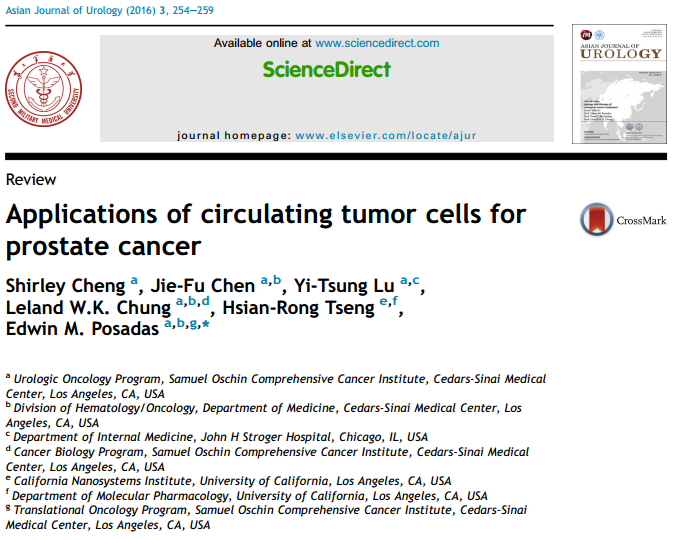
Applications of circulating tumor cells for prostate cancer
Shirley Cheng, Jie-Fu Chen, Yi-Tsung Lu, Leland W. K. Chung, Hsian-Rong Tseng, Edwin M. Posadas
Asian Journal of Urology, 2016, 3(4): 254-259.
 摘要
摘要
(
394 )
 PDF
PDF (1771KB)
(
164
)
One of the major challenges that clinicians face is in the difficulties of accurately monitoring disease progression. Prostate cancer is among these diseases and greatly affects the health of men globally. Circulating tumor cells (CTCs) are a rare population of cancer cells that have shed from the primary tumor and entered the peripheral circulation. Not until recently, clinical applications of CTCs have been limited to using enumeration as a prognostic tool in Oncology. However, advances in emerging CTC technologies point toward new applications that could revolutionize the field of prostate cancer. It is now possible to study CTCs as components of a liquid biopsy based on morphological phenotypes, biochemical analyses, and genomic profiling. These advances allow us to gain insight into the heterogeneity and dynamics of cancer biology and to further study the mechanisms behind the evolution of therapeutic resistance. These recent developments utilizing CTCs for clinical applications will greatly impact the future of prostate cancer research and pave the way towards personalized care for men.
参考文献 |
相关文章 |
计量指标
|
|
|
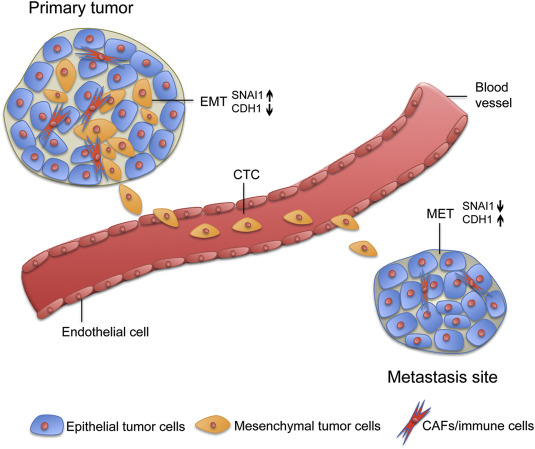
Intrinsic subtypes and bladder cancer metastasis
David J. McConkey, Woonyoung Choi, Andrea Ochoa, Colin P. N. Dinney
Asian Journal of Urology, 2016, 3(4): 260-267.
 摘要
摘要
(
335 )
 PDF
PDF (2622KB)
(
274
)
Recent studies demonstrated that bladder cancers can be grouped into basal and luminal molecular subtypes that possess distinct biological and clinical characteristics. Basal bladder cancers express biomarkers characteristic of cancer stem cells and epithelial-tomesenchymal transition (EMT). Patients with basal cancers tend have more advanced stage and metastatic disease at presentation. In preclinical models basal human orthotopic xenografts are also more metastatic than luminal xenografts are, and they metastasize via an EMT-dependent mechanism. However, preclinical and clinical data suggest that basal cancers are also more sensitive to neoadjuvant chemotherapy (NAC), such that most patients with basal cancers who are aggressively managed with NAC have excellent outcomes. Importantly, luminal bladder cancers can also progress to become invasive and metastatic, but they appear to do so via mechanisms that are much less dependent on EMT and may involve help from stromal cells, particularly cancer-associated fibroblasts (CAFs). Although patients with luminal cancers do not appear to derive much clinical benefit from NAC, the luminal tumors that are infiltrated with stromal cells appear to be sensitive to anti-PDL1 antibodies and possibly other immune checkpoint inhibitors. Therefore, neoadjuvant and/or adjuvant immunotherapy may be the most effective approach in treating patients with advanced or metastatic infiltrated luminal bladder cancers.
参考文献 |
相关文章 |
计量指标
|
|
|
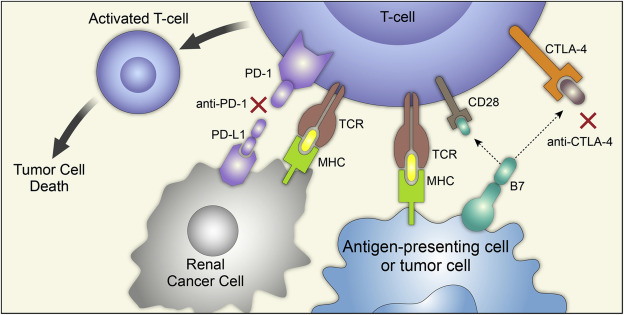
Novel immunotherapy approaches for metastatic urothelial and renal cell carcinoma
Zhiying Shao, Andrew Z. Wang, Daniel J. George, Tian Zhang
Asian Journal of Urology, 2016, 3(4): 268-277.
 摘要
摘要
(
408 )
 PDF
PDF (4588KB)
(
241
)
The treatment of metastatic renal cell carcinoma (RCC) and urothelial carcinoma (UC) remains a major challenge. Past research has implicated the immune system in tumor surveillance of both malignancies, leading to the application of immunotherapy agents for both cancers. Among them, the most promising agents are the checkpoint blockade drugs, such as antibodies targeting the cytotoxic T-lymphocyte-associated antigen 4 (CTLA-4), programmed death receptor 1 (PD-1), and PD-1 ligand (PD-L1). In normal physiology, these immune checkpoints act as inhibitory signals to fine-tune the duration and strength of immune reactions, which is pivotal for maintaining self-tolerance. However, tumor cells also utilize immune checkpoint pathways to evade anti-tumor immune response, leading to disease progression and metastasis. Thus, there has been intense preclinical and clinical effort focused on the application of checkpoint inhibitors in metastatic RCC and UC. To date, nivolumab (anti-PD-1) and atezolizumab (anti-PD-L1) have been approved for the treatment of metastatic RCC and UC, respectively. Despite these successes, challenges remain in how to further improve response rates to immunotherapy and how to select patients that will benefit from this approach. In this report, we review existing data and research on immunotherapy in metastatic RCC and UC.
参考文献 |
相关文章 |
计量指标
|
|
|

Developing immunotherapy strategies in the treatment of prostate cancer
James L. Gulley, Ravi A. Madan
Asian Journal of Urology, 2016, 3(4): 278-285.
 摘要
摘要
(
295 )
 PDF
PDF (1786KB)
(
224
)
The clinical development of immunotherapy has gained significant impetus in recent years across the field of medical oncology. Mounting preclinical and clinical data have demonstrated the potential of immune-based treatments to augment anti-tumor immune responses. With one of the first modern immunotherapies approved in prostate cancer and multiple others in late stage development, immune treatment strategies need to be optimized to ensure the best clinical outcomes. Combination strategies with androgen deprivation therapy, anti-androgen therapy, radiation and chemotherapy have demonstrated the potential maximize immune response in prostate cancer patients. These combinations are currently being evaluated in clinical trials at every stage of prostate cancer from the newly diagnosed to the most advanced stages. Data from these studies will provide guidance for the future clinical implementation of immunotherapy in prostate cancer.
参考文献 |
相关文章 |
计量指标
|
|
|
Metastasis in renal cell carcinoma: Biology and implications for therapy
Jun Gong, Manuel Caitano Maia, Nazli Dizman, Ameish Govindarajan, Sumanta K. Pal
Asian Journal of Urology, 2016, 3(4): 286-292.
 摘要
摘要
(
409 )
 PDF
PDF (2842KB)
(
271
)
Although multiple advances have been made in systemic therapy for renal cell carcinoma (RCC), metastatic RCC remains incurable. In the current review, we focus on the underlying biology of RCC and plausible mechanisms of metastasis. We further outline evolving strategies to combat metastasis through adjuvant therapy. Finally, we discuss clinical patterns of metastasis in RCC and how distinct systemic therapy approaches may be considered based on the anatomic location of metastasis.
参考文献 |
相关文章 |
计量指标
|
|
 当期目录
当期目录
